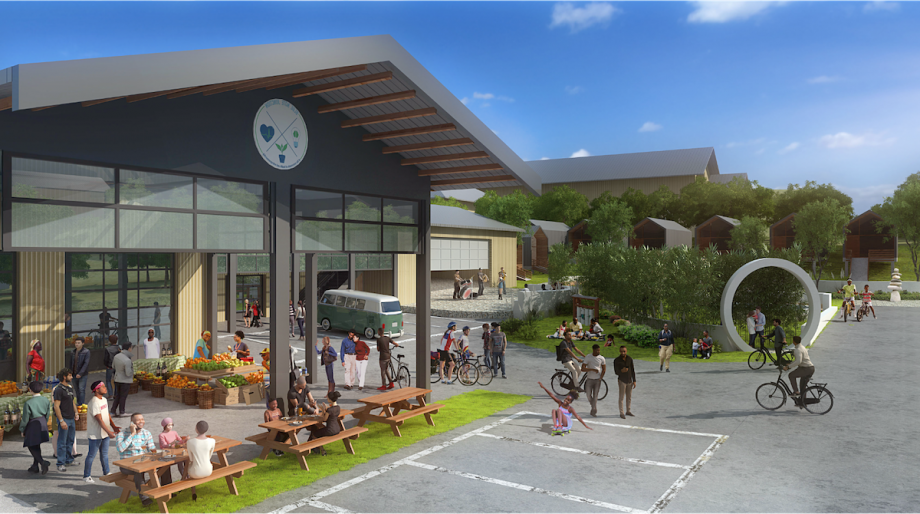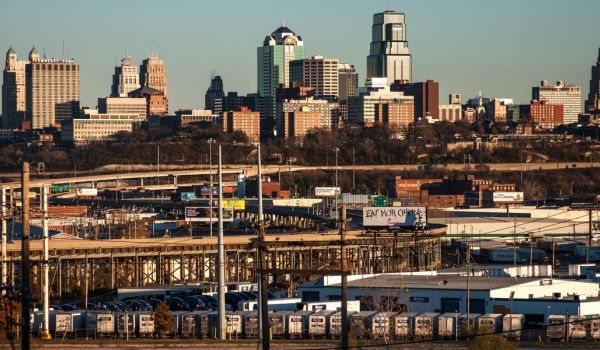When DeWayne Barton returned to Asheville, North Carolina’s Burton Street neighborhood in 2001, he found a community reeling from years of devastating blows. Like many historically Black neighborhoods across the country, the Burton Street community was the victim of highway expansions in the 1950s and 1960s that quite literally tore the neighborhood apart. That plus the effects of the crack cocaine epidemic of the ’80s and ’90s had turned Burton Street into a neighborhood in need of saving.
“That urban renewal period, 1950 to 1970, is what really dropped the hammer and really crushed the neighborhood,” says Barton, who was born in Asheville but grew up in Washington, D.C. “It started in 1950 when they widened Patton Avenue and they took land from the neighborhood. In [the] 1960s they hit ‘em again, and that was the real devastating blow to the neighborhood.”
For 22 years, Barton has worked to restore Burton Street — a community his family has called home for four generations — to its former glory as a thriving Black neighborhood with a strong focus on community and entrepreneurship. His most recent project, Blue Note Junction, is his biggest endeavor yet.
Described as a “community health and business incubator,” Blue Note Junction aims to serve the local community and support BIPOC business owners and entrepreneurs. The 1.5-acre space will include a theater, fresh market, commercial kitchen, coworking and counseling space, outdoor spa, barber shop, greenhouse and gardens and an artist village, as well as space for Hood Tours, Barton’s company that offers local Black history tours.
“It’s gonna be a place that supports self-care as much as it’s gonna be a spot that will promote entrepreneurship,” Barton says.
The name of the project comes from the Blue Note Casino. The building, which Barton says served as a grocery store, hair salon, apartment building, community center and nightclub, was built by E.W. Pearson in the 1920s. Pearson, a Buffalo Soldier, serial entrepreneur, and civil rights activist, had a significant impact on the Burton Street neighborhood, so much so that he was known as “the Black Mayor of West Asheville.”
Blue Note Junction is Asheville’s first community-owned real estate project. Safi Martin, Barton’s wife and business partner, says when they launched the project, more than 300 local individuals and organizations contributed just under $200,000. She says they’re considering doing a crowdfunding campaign as well.
DeWayne Barton and Safi Martin, creators of the Blue Note Junction project (Photo by Catherine Siravantha)
“People in the community can have an equity stake in the project and get a return on their investment for as little as, like, $250 or $100, so that the community truly owns the project and gets to not only benefit culturally and socially from the project, but financially as well,” Martin explains.
This isn’t Barton and Martin’s first project together. In 2003, they created the Burton Street Community Peace Gardens, now known as the Peace Gardens & Market. With the help of local volunteers — many of them youth from the neighborhood — Barton and Martin distribute fresh produce to senior citizens in the community and run a pay-what-you-can farmstand.
Blue Note Junction is estimated to cost $4.5 million. They recently received support toward their fundraising goal from Opportunity Appalachia, a consortium of eight regional partners coordinated by CDFI Appalachian Community Capital that aims to bring investments that create new jobs and businesses and support sustainable growth to Appalachian communities.
For Barton and Martin, supporting BIPOC entrepreneurs — a group that faces more challenges than their white counterparts when it comes to running a business — isn’t just a talking point. It’s baked into their business plan. As Martin explains, their commercial real estate model keeps rents below market value so they can support business owners who have limited access to resources. Currently, rent in Asheville is between $25 and $30 per square foot, Martin says. At Blue Note Junction, they’re keeping rent under $20 a square foot, with the exception of the commercial kitchen, which will cost more to build out.
“We still are projected to have profits that would allow us to provide over a 10% return on investment for folks who want to invest in the project,” Martin says.
They are currently in the process of raising the remaining project funds. Martin says they are doing a phased development process. They plan to construct the artist village, which will consist of 20 live-work spaces, first so they can create revenue for the project. The goal is to complete Blue Note Junction by the end of 2025.
To assist others who are interested in creating something similar to Blue Note Junction, Barton is self-publishing a book called “CAP: the Community Accountability Plan.” The book looks at community development from the grassroots level and is designed to encourage policymakers and civic and business leaders to get involved in the process.
Barton believes Blue Note Junction can be “a mirror to the rest of the world about what you can do with what you have.”
“It’s a model that can be replicated,” he says. “It’s a place that produce[s] great product and a model that people can say, ‘Wow, I want to do this at my hometown.’”

This story is part of our series, CDFI Futures, which explores the community development finance industry through the lenses of equity, public policy and inclusive community development. The series is generously supported by Partners for the Common Good. Sign up for PCG’s CapNexus newsletter at capnexus.org.
This article is part of The Bottom Line, a series exploring scalable solutions for problems related to affordability, inclusive economic growth and access to capital. Click here to subscribe to our Bottom Line newsletter.
Brittany Moseley is a writer based in Columbus, Ohio. She’s passionate about the arts, civic engagement, racial equity and great storytelling.







_600_350_80_s_c1.jpg)


_600_350_80_s_c1.jpg)







